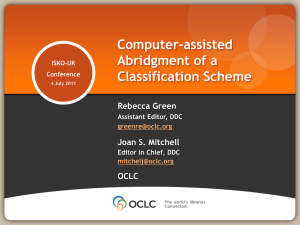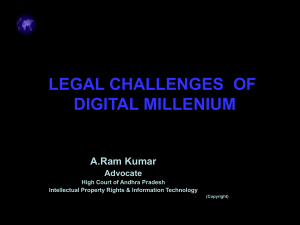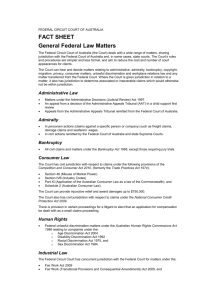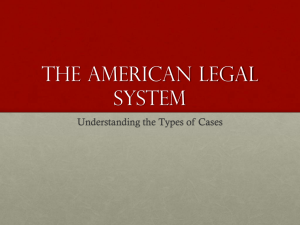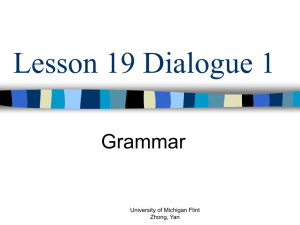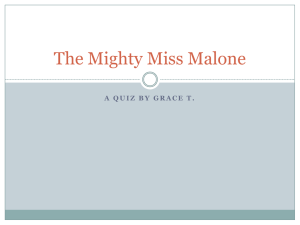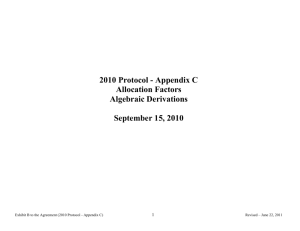EPC Exhibit 134-21.2 May 20, 2011 THE LIBRARY OF CONGRESS
advertisement
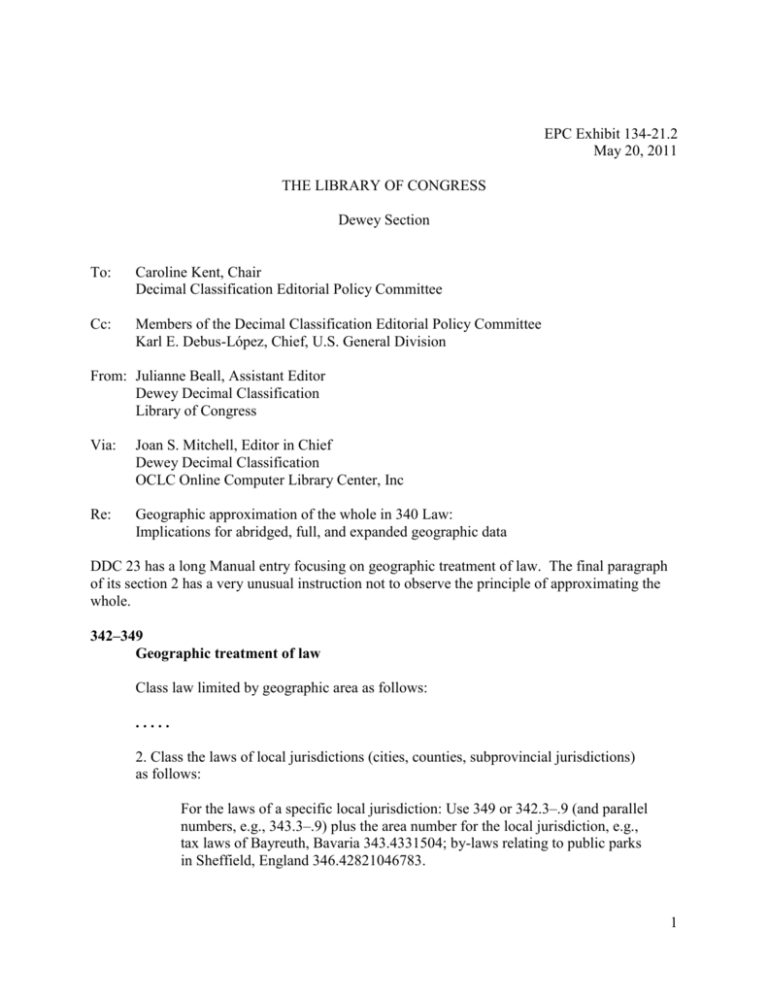
EPC Exhibit 134-21.2 May 20, 2011 THE LIBRARY OF CONGRESS Dewey Section To: Caroline Kent, Chair Decimal Classification Editorial Policy Committee Cc: Members of the Decimal Classification Editorial Policy Committee Karl E. Debus-López, Chief, U.S. General Division From: Julianne Beall, Assistant Editor Dewey Decimal Classification Library of Congress Via: Joan S. Mitchell, Editor in Chief Dewey Decimal Classification OCLC Online Computer Library Center, Inc Re: Geographic approximation of the whole in 340 Law: Implications for abridged, full, and expanded geographic data DDC 23 has a long Manual entry focusing on geographic treatment of law. The final paragraph of its section 2 has a very unusual instruction not to observe the principle of approximating the whole. 342–349 Geographic treatment of law Class law limited by geographic area as follows: ..... 2. Class the laws of local jurisdictions (cities, counties, subprovincial jurisdictions) as follows: For the laws of a specific local jurisdiction: Use 349 or 342.3–.9 (and parallel numbers, e.g., 343.3–.9) plus the area number for the local jurisdiction, e.g., tax laws of Bayreuth, Bavaria 343.4331504; by-laws relating to public parks in Sheffield, England 346.42821046783. 1 For the laws of all the localities of a given area: Use the area number for the jurisdiction that contains the localities, e.g., tax laws of the cities of Bavaria 343.43304, of the cities of Germany 343.4304, laws relating to the public parks of cities in the United Kingdom 346.41046783. Do not observe the principle of approximating the whole for jurisdictions for which there is no specific area number, i.e., subdivisions may be added for a jurisdiction not having its own number, e.g., Flint, Michigan’s and Mt. Morris, Michigan’s ordinances governing mental health services to the addicted 344.77437044. (Flint is in an including note at T2—77437 in Table 2, which normally means subdivisions may not be added for it. Mt. Morris, a suburb of Flint, is not mentioned in the including note, but subdivisions may still be added). ..... A similar instruction not to observe the principle of approximating the whole was given in the Manual for DDC 21 and 22. No such instruction, however, has been given in an abridged edition. In the abridged edition, the most specific Table 2 number available for Flint, Michigan, is T2—774 Michigan. If the principle of approximating the whole is observed, 344.774 is the number for Flint, Michigan, ordinances governing mental health services to the addicted. The number 344.774 is the same as the full edition number (344.77437044) except shorter: it represents a true abridgment of the full number. If the principle of approximating the whole were not observed, the resulting abridged number would be 344.77404; that would violate the principle of true abridgment. A similar problem arises when Table 2 is expanded beyond what is in the full English-language edition. For example, a work on Mühldorf am Inn ordinances governing mental health services to the addicted would be classed in 344.433668044 if classed using the German DDC 22, because the German edition has T2—433668 Mühldorf am Inn; however, in the full Englishlanguage DDC 22 or 23, the most specific Table 2 number for Mühldorf am Inn is T2—4336 Upper Bavaria (Oberbayern). If the current Manual instruction is followed, the number assigned using the full English-language edition is 344.4336044, a number that violates the principle of true abridgment with respect to the German DDC. To maintain the principle of true abridgment, either the English Table 2 should be expanded to match the German Table 2 (and the Italian and Vietnamese Table 2, etc.), or the instruction not to observe the principle of approximating the whole should be rescinded. Probably the instruction should be rescinded. When Table 2 notation is added at the end of a number—as is common in DDC—then different levels of development in Table 2 do not cause comparable problems. In 340 Law, however, jurisdiction is generally considered too important to be placed at the end of the number. If jurisdiction were always placed at the end of the number, then jurisdiction could never be given for works about any subject in standing room, e.g., law concerning food additives, a subject named in the including note at 344.04232 Food. 2 The options given in the schedule under 342–349 allow libraries to give different emphases to jurisdiction. Option A allows libraries to give preferred treatment to a specific jurisdiction, option B allows libraries to give preferred treatment to jurisdiction in general, and option C allows libraries to give preferred treatment to branch of law and subordinate subjects in general. 3
